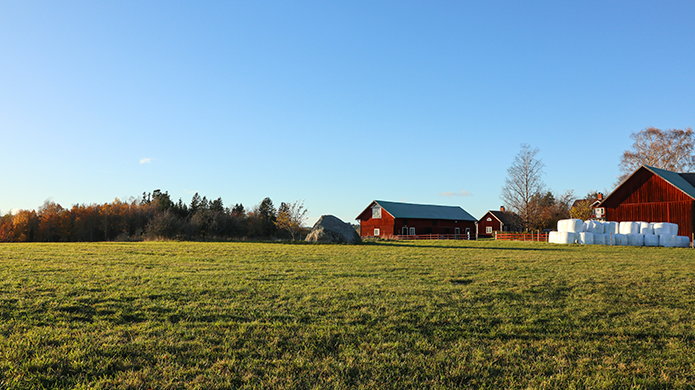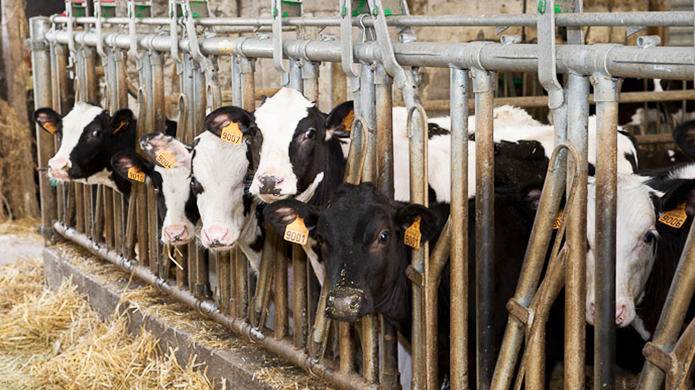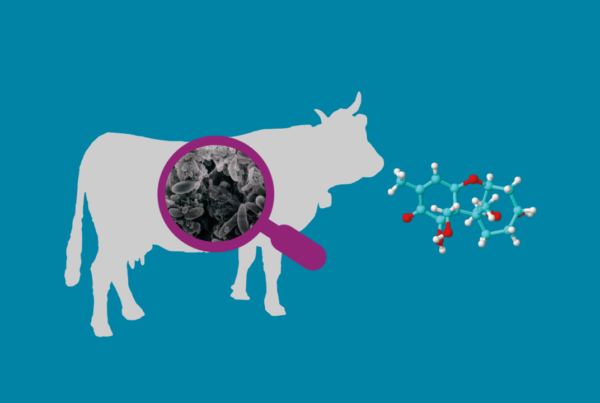How to control mycotoxin contamination in the feed?
The first approach to control mycotoxin contamination in feed is to prevent the formation of mycotoxins ahead of the feed mill (Lopez-Garcia and Park, 1998), but it has limited efficacy. Once the feed becomes contaminated with mycotoxins, the elimination of mycotoxins is almost impossible.
In fact, mycotoxins are chemically and thermally stable, meaning that the common feed processes are not efficient to remove mycotoxins. For instance, extrusion processing at temperatures greater than 150°C are needed to give a good reduction of zearalenone and fumonisins, a moderate reduction of aflatoxins and a variable to low reduction of deoxynivalenol (Bullerman et al., 2007). Removing kernels with extensive mold growth, broken kernels, and fine materials by sieve cleaning significantly lowers total mycotoxin contamination, however, significant amount of the total feed can be rejected (Trenholm et al., 1991) with huge economic consequences.
The most common strategy for reducing animal’s exposure to mycotoxins is to decrease mycotoxins bioavailability by incorporating various mycotoxin-detoxifying agents in the feed, which targets a reduction of mycotoxin uptake and distribution to the blood and target organs. Depending on their mode of action, these feed additives may act by reducing the bioavailability of the mycotoxins (adsorbing agents also called binding agents, adsorbents, binders) or by degrading them into less toxic metabolites (biotransforming agents).
Mycotoxin-adsorbing agents are large molecular weight compounds that are not digested by the animals and end in the faeces. Adsorbing agents must be able to bind mycotoxins in contaminated feed without dissociating along the gastrointestinal tract of the animal, so that the toxin-adsorbing agent complex is eliminated via the faeces. This minimizes the exposure of animals to mycotoxins (EFSA, 2009).
Adsorbing agents can be mineral or organic compounds. Their mode of action is based on intermolecular interactions (toxin-binder) that depends on electrostatic/hydrophobic interactions (hydrogen or ionic binding and Van der Walls forces) and shape effects (planar or non-planar geometry), differing with the nature of the adsorbent as well as the type of mycotoxin. Many mycotoxins can occur simultaneously in the feed with various chemical and physical properties. They can differ a lot in terms of hydrophobicity/polarity and possible types of bonds (number and nature). The size of mycotoxins can be similar between families, but with very different 3D conformation and volume. For instance, aflatoxins are planar, zearalenones are flexible and trichothecenes are globular and rigid molecules, though they all have comparable size. The total charges distribution and the size of pores or accessible surface of adsorbing agents also determine their efficacy to bind to different mycotoxins.
Facing the abundance of available adsorbing agent candidates, screening methods are needed to evaluate their efficacy and select appropriate materials. In vitro tests are powerful tools for screening potential mycotoxin detoxifying agents. If a sequestering agent does not adsorb a mycotoxin in vitro, it has low chances to do so in vivo (EFSA 2009). The in vitro efficacy of adsorbing agents can be tested either in static or dynamic conditions. The most widely used static in vitro model is the single concentration method, whereas adsorption isotherms are rather used to understand the behaviour of adsorbing agents. Nevertheless, using a static model has limitations and may lead to an overestimation of the binding capacity (Versantvoort et al., 2005). Vekiru et al. (2007) showed that adsorbents are generally less efficient when gastrointestinal conditions are simulated with a dynamic model. In order to make the best evaluation of an adsorbing agent, it’s strongly recommended to use a dynamic model.

Wheat field.
Efficacy of the major adsorbing agents
Activated carbon, also called activated charcoal, is a form of carbon processed to have small, low-volume pores that increase the surface area available for adsorption or chemical reactions. The efficacy of activated carbon to bind different types of mycotoxins has been proven in static and dynamic models (Avantaggiato et al., 2003 & 2004), however this adsorbing agent is not selective meaning that it also efficiently binds small molecules such as vitamins (Vekiru et al., 2007). Consequently, activated carbon is no longer commonly used in feed but remains a reference material in several studies.
Silicate minerals are the most frequent mycotoxin adsorbing agent in the market. They can be either phyllosilicates (smectites) or tectosilicates (zeolites), the latter having a limited efficacy compared to phyllosilicates and particularly smectites (Lemke et al., 2001; Vekiru et al., 2015). The interlayer space (d-spacing), between the layers that compose smectites, allows the entrance and the efficient binding of planar molecules like aflatoxins (Diaz et al., 2003) with variable efficacy depending on the smectite quality (Vekiru et al., 2007). However, smectites have very limited or no-efficacy of adsorption of other mycotoxins than aflatoxins (Döll et al., 2004; Avantaggiato et al., 2005).

Farm landscape.
The mycotoxins adsorption spectrum of smectites can be improved by increasing their interlayer space (d-spacing), as demonstrated by De Mil et al. (2015), contrary to strategies that aim at increasing the cationic Exchange capacity of clays (modified smectites enriched in cations) with limited efficacy. An innovative material based on smectite and algae extracts, permits to increase the interlayer space of smectite up to 5nm and thus bind large molecules like deoxynivalenol and fumonisins (Demais and Havenaar, 2006). This material showed efficacy against a large variety of mycotoxins in a dynamic model (TNO, Netherlands) as well as many in vivo models (eg. Samitec, Brazil) without altering nutrients availability.
Organic adsorbing agents such as yeast cell walls are also frequent in the feed market for their ability to complex with some mycotoxins without reducing the bioavailability of nutrients. They are mostly composed of polysaccharides (beta-glucans and mannanoligosaccharides (MOS) involved in the formation of both hydrogen bonds and van der Waals interactions with mycotoxins (Yiannikouris et al., 2006). The capacity of yeast cell walls to adsorb flexible mycotoxins such as zearalenone and ochratoxins has been widely demonstrated with static in vitro models (Joannis-Cassan et al., 2011; Yiannikouris et al., 2013). The adsorbing efficacy is very variable depending on the beta-glucan, MOS and chitin content of the yeast cell wall (Fruhauf et al., 2012; Yiannikouris et al., 2004), though no direct correlation between yeast composition and adsorption capacity was found (Joannis-Cassan et al., 2011). Nevertheless, yeast cell walls show very limited efficacy to bind deoxynivalenol and fumonisins (Döll et al., 2004, Avantaggiato et al., 2005 & 2006) and even aflatoxins (Joannis-Cassan et al., 2011).
”Adsorbing agents must be able to bind mycotoxins in contaminated feed without dissociating along the gastrointestinal tract of the animal
Biotransformation strategies
A great number of microorganisms have some capacity to degrade or detoxify some mycotoxins into non-toxic metabolites (Abrunhosa et al., 2009). They are the basis of many products available on the market, though very few with demonstrated efficacy (Hahn et al., 2015). Among the serious candidates, a Gram-positive anaerobic bacterium, isolated from rumen fluid, can produce an enzyme (epoxidase) responsible for trichothecenes detoxification. This microorganism is available for use in the feed, but the reaction occurs under strict anaerobic conditions (King et al., 1984; Kollarczik et al., 1994) and requires 24 hours to be achieved (Hahn et al., 2015).
This can explain why different studies failed to demonstrate the de-epoxidase activity of the product (Karlovsky, 1999; Döll et al., 2004; Avantaggiato et al., 2004). Also, in vivo investigations demonstrated that this product is not able to alleviate the toxic effects of deoxynivalenol in various animal species (Danicke et al., 2010). Another enzyme (carboxylesterase) has been identified, in Sphingopyxis sp. isolated from soil, to detoxify fumonisins, however very limited data is available on the efficacy of this agent. If the biotransformation strategies show promising results under specific in vitro conditions, the efficacy of in vivo applications remains to be clarified

Dairy farm.
Conclusion
Activated carbon used to be the only efficient solution against several mycotoxins including deoxynivalenol and fumonisins (Sabater-Vilar, 2003), though inadequate due to its negative effects on nutrients bioavailability. Smectite clays and yeast cell walls proved their efficacy against aflatoxin and zearalenone respectively. Meanwhile, today, modified smectite thanks to algae, developed by Olmix, has gained recognition as it showed efficacy against deoxynivalenol and fumonisins in a dynamic in vitro model, without affecting nutrients.



